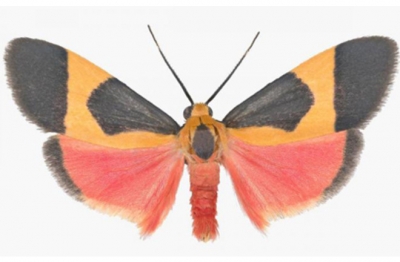
Tiger moths have evolved a clever way to avoid being eaten by their biggest predators, bats. Storing up toxins (cardiac glycosides) from the plants they feed on as larvae make them “highly unpalatable”. The moths use special organs called tymbals to broadcast sounds. They use the sounds like other species use bright colours: to warn potential predators: “Stay away, I’m toxic!”
Normally, a bat attack starts with relatively intermittent sounds. They then increase in frequency—up to 200 cries per second—as the bat gets closer to the moth “so it knows where the moth is at that critical moment,” Corcoran explains. But his research showed that just as bats were increasing their click frequency, moths “turn on sound production full blast,” clicking at a rate of up to 4,500 times a second. This furious clicking by the moths reversed the bats’ pattern—the frequency of bat sonar decreased, rather than increased, as it approached its prey, suggesting that it lost its target.
The biological mechanism behind the moth’s defense strategy is still unclear to researchers. “Most likely, moth clicks are disrupting the bat’s neural processing of when echoes return,” Corcoran says. Bats judge how far away a moth is based on the time delay between making the cry and its audible return. This “blurring” of the bat’s vision, he explains, “may be just enough to keep the moth safe.”
Picture Credit : Google




